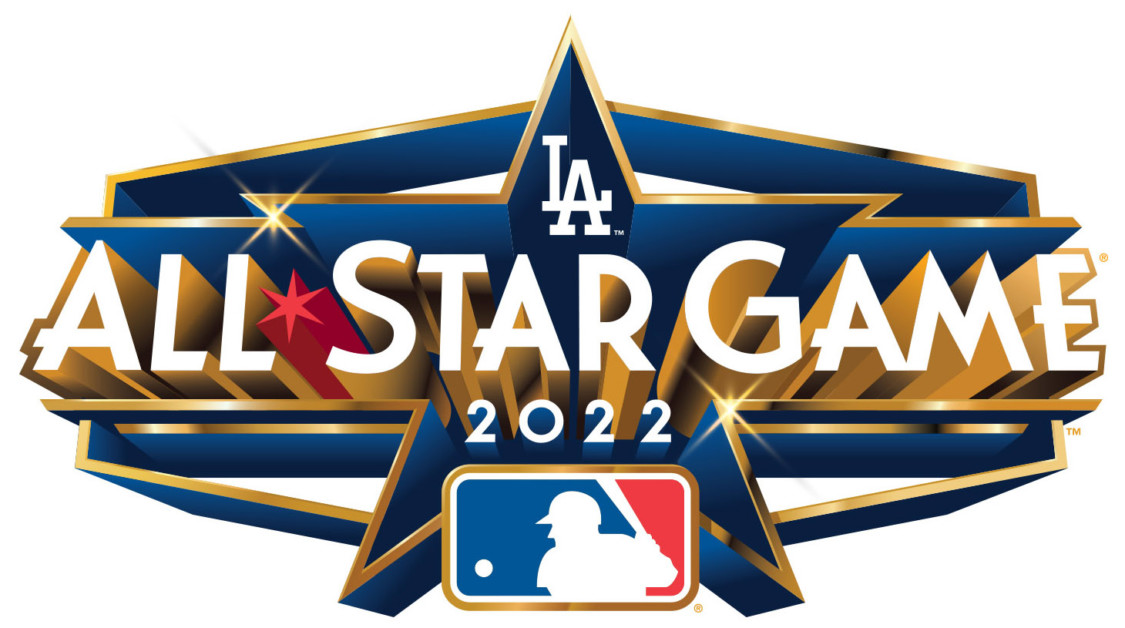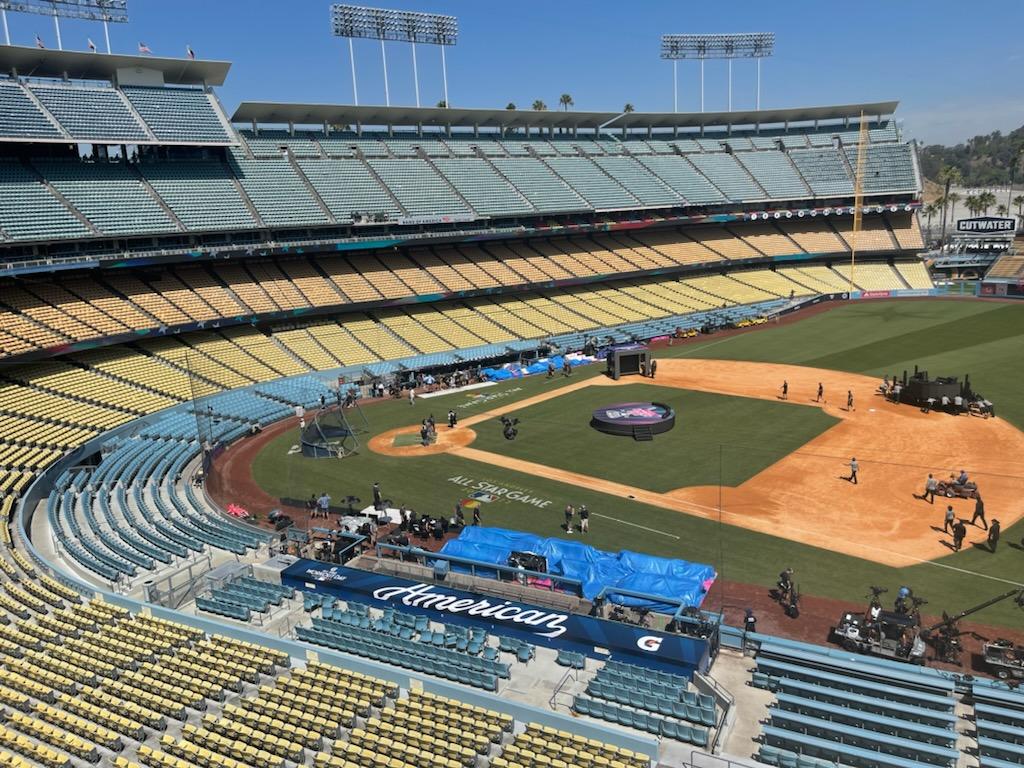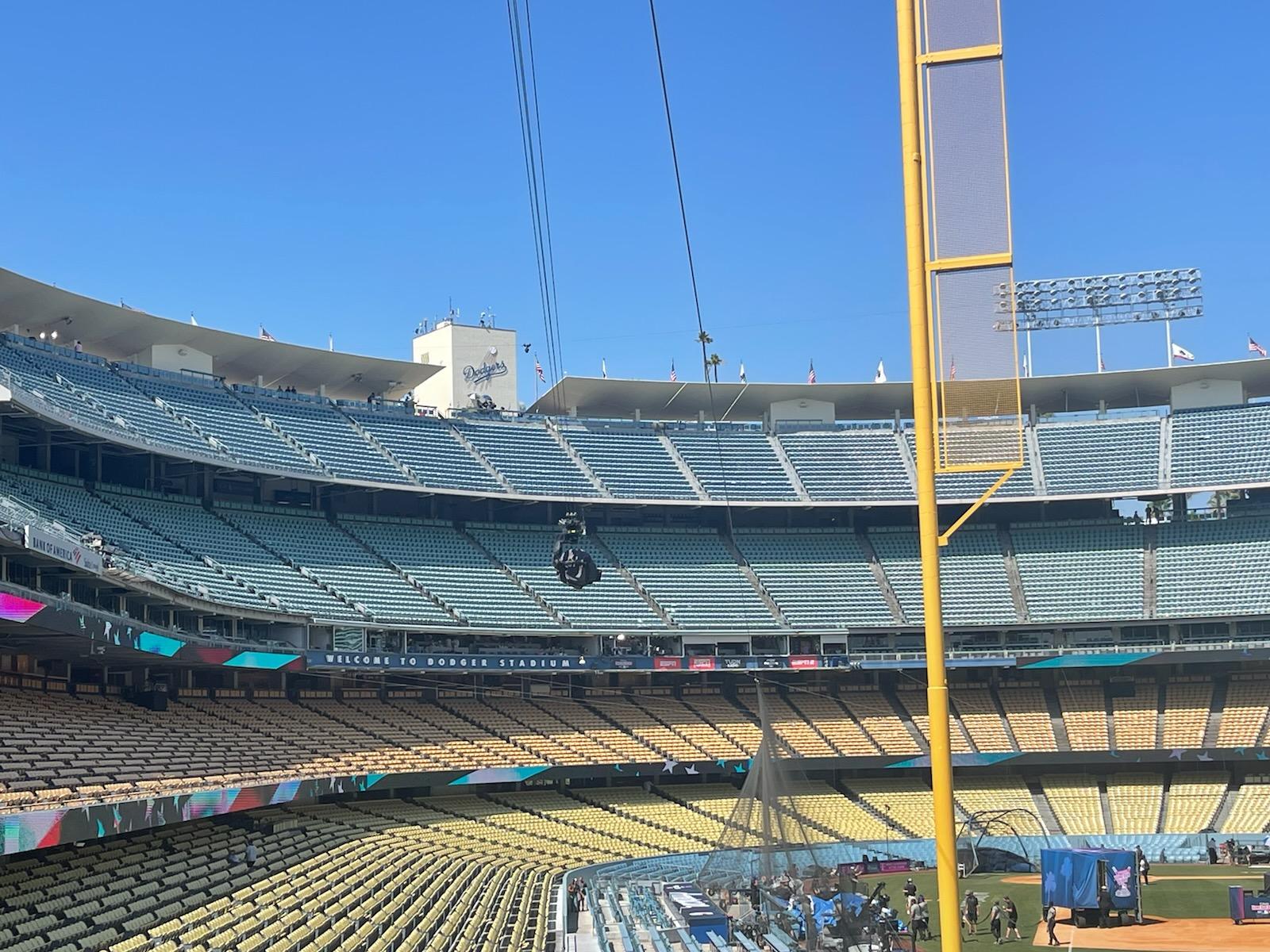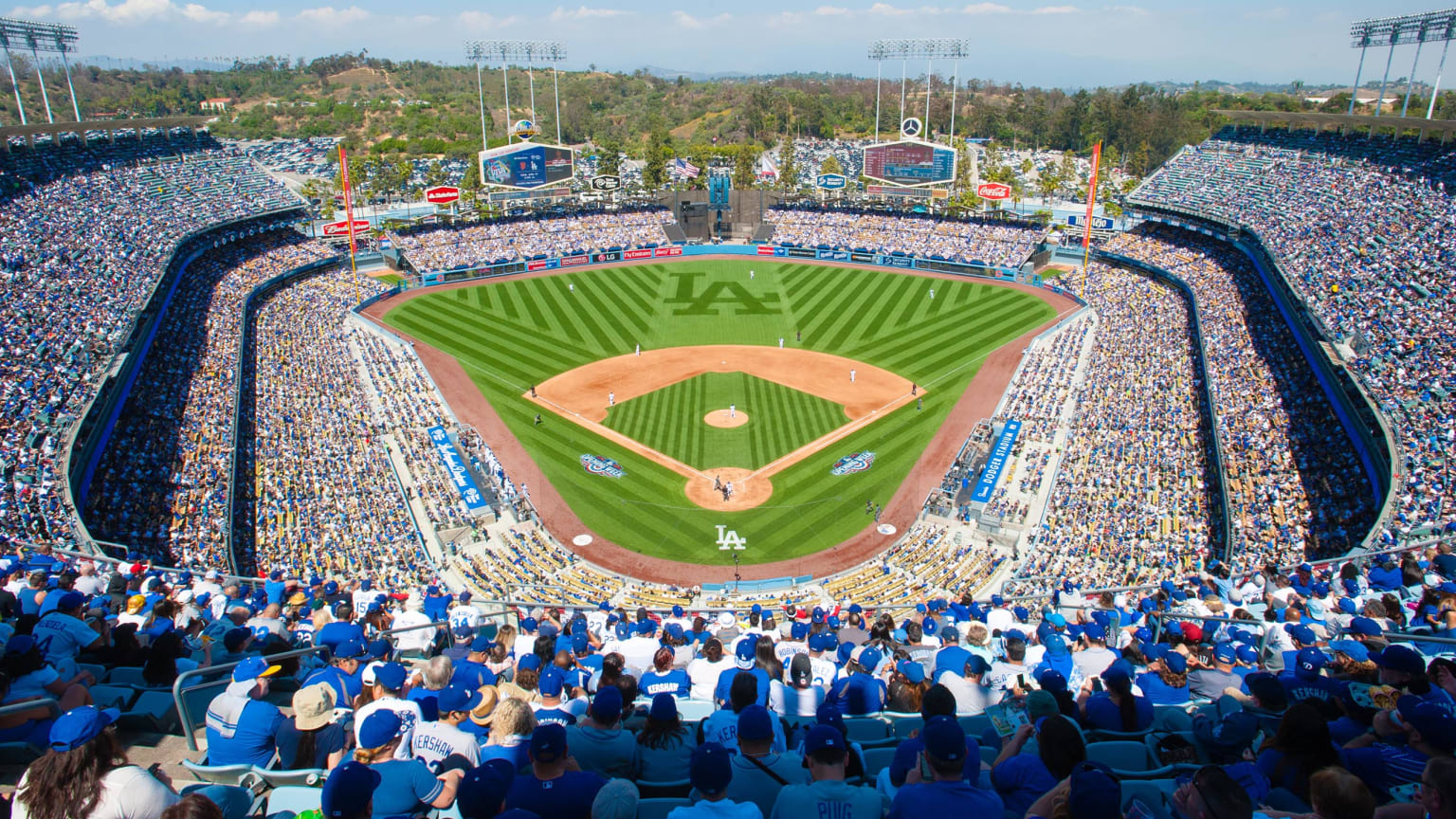Fox Sports Upgrades All-Star Game Tech Coverage Plans
For this year's game, Fox Sports will use 45 cameras, expand its use of super-slow motion and add a second FLYCAM

LOS ANGELES—An exhibition game like the MLB All-Star Game July 19 always offers broadcasters a little more freedom to bring those something-extra elements to the production that might not otherwise be available in their arsenal of technology for regular season play.
Such is the case with this year’s production of the All-Star Game from Dodger Stadium here with the addition of some form of Super-Slow Motion available from all primary cameras and a second FLYCAM that will deliver shots of the Los Angeles skyline as well as the stadium, says Brad Cheney, vice president of field operations and engineering at Fox Sports.
“We are coming at this year’s coverage with 45 cameras and over 76 microphones to capture the game in its truest form and provide viewers access to the game and players in a way only Fox can with the help of Major League Baseball,” says Cheney.
For the game, Fox Sports will capture the action in 1080p HLG (Hybrid Log Gamma) HDR, which will be upconverted to Ultra HD for 4K distribution and downconverted to 720p SDR for distribution to Fox stations and affiliates.

The broadcaster will use a combination of native 2x, 6x and 8x Super-Slow Motion cameras for primary shots as well as Xtramotion technology developed during a collaborative effort by Fox and EVS for specialty cameras, such as the four dirt cameras with associated microphones that will cover home plate, the pitcher’s mound and other angles, he says.
“We’ll have Xtramotion on site for those kinds of cameras that just don’t have that capability—the ones that are always going to be non-high-frame-rate,” he says.
Prior to the telecast, Sony released a detailed list of its cameras to be used, including an Alpha 7 III the full-frame mirrorless digital camera “Megalodon” for hero shots; HDC-P31 high-def POV system cameras for shots from the dugouts, low home plate, bullpens and overhead home plate; HDC-P50 4K/HD POV system cameras, used for shots from the same positions; HDC-4300 4K and HFR live cameras; HDC-5500 4K/HD live broadcast and studio cameras; an HDC-3500 portable 4K/HD/HDR camera; and HDC-1 F5500 Super 35mm 4K cameras.
Get the TV Tech Newsletter
The professional video industry's #1 source for news, trends and product and tech information. Sign up below.
FLYCAMs and Beyond
Two FLYCAMs are being deployed. Along the first base line, one will extend from the low side of home plate to a crane outside of the stadium.
“A second one, which we feel is going to be very spectacular, is going to be from above all of the retired numbers outside Dodger Stadium at the front entrance. It will fly over and down the third base line and out into the parking lot,” says Cheney. “It’s going to give us an amazing view of downtown as well as just some spectacular views of the stadium itself.”
Major League Baseball, July 18, approved the addition of another new production feature that will deliver a new angle along the first base side of the field from the perspective of the dugout.
The newly authorized Rail-Cam will run back and forth along the rail on the face of the dugout, says Cheney. “It should capture some really cool views from behind the players and what’s happening down the first base line,” he says.

Coverage of sporting events in HLG HDR has become “kind of second nature” for Fox Sports, he notes.
Over the past five years, the number of sports contests Fox Sports has covered in HLG HDR has dramatically grown as has the availability of different HDR technology and the broadcaster’s overall experience with high dynamic range, says Cheney, adding that HDR has greatly benefited the look of its standard dynamic range (SDR) coverage as well.
“We’re going to be able to keep the look and the feel of the beautiful California sunshine all of the way through and into the early evening,” he says. “As we transition over into the full lighting of Dodger Stadium, we are going to be able to capture that kind of brightness and energy through the end of the broadcast.”
Unlike many of the Fox Sports productions since the pandemic, the production of the All-Star Game will not be based on remote integration model (REMI) production. In fact, the replay operators and graphics artists who typically would contribute to the production of the telecast from the broadcaster’s “Vault” centralized production control facility in Los Angeles will work on-site, says Cheney.

Audio and RF
For its audio coverage of the action, Fox Sports will produce the game in 5.1 Surround Sound. The broadcaster plans to expand its use of player mics during the game with an eye toward capturing some audio of the players themselves and the action.
“Our goal as well is to have a number of conversations in game, which we’ve done in past All-Star Games,” says Cheney. “That’s bound to be something that’s really exciting and something different for both the players and the fans.”
Coming into the already crowded RF environment of Los Angeles, Fox Sports, ESPN and MLB Network will rely on congested spectrum for their wireless communications. CP Communications of Yorktown Heights, New York, is managing coordination to “make all this work between us and local broadcasters,” he says.
“There’s a lot of work that’s done to make sure that the frequencies that we use on Tuesday [for the game] are the frequencies ESPN uses on Monday [for the Home Run Derby] and then Major League Baseball Network uses on Friday and Saturday,” he says. “It’s a very trusting environment between all of the network partners, and we’re lucky to have a group to help us make that happen.”
(Fox Sports’ coverage of the 2022 MLB All-Star Game starts July 19 at 7 p.m. EDT with the game beginning at 8 p.m. EDT. FOX Deportes will telecast the game with Spanish-language commentary. Viewers can watch the 2022 MLB All-Star Game via their local Fox station, which is available on streaming providers, including DirecTV Stream, YouTube TV, Hulu + Live TV and Fubo TV, as well as cable and satellite providers.)
Phil Kurz is a contributing editor to TV Tech. He has written about TV and video technology for more than 30 years and served as editor of three leading industry magazines. He earned a Bachelor of Journalism and a Master’s Degree in Journalism from the University of Missouri-Columbia School of Journalism.

